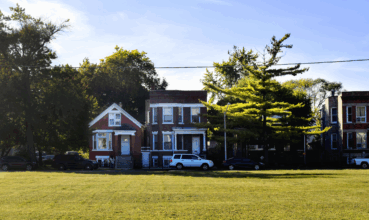Get a free color analysis a $250 value Professional Headshots & Branding Photography Package Details Shining through the crowded Fort Lauderdale market can be tough. Let me help you elev...
Office-to-Apartment Conversions Hit Record High: Opportunities and Challenges Ahead




The numbers tell a compelling story: office-to-apartment conversions have surged by an astonishing 484% over four years, with a record-breaking 70,700 apartment units expected to emerge from former office spaces in 2025. This transformation is reshaping urban landscapes across America, yet beneath these headline figures lies a complex web of opportunities and challenges.
The Driving Forces Behind the Trend
“Converting office space to multifamily buildings is no easy task,” notes REJournals in their latest market analysis, capturing the essence of one of real estate’s most significant trends. These conversions offer cities a chance to repurpose outdated or underutilized office stock while addressing critical housing shortages—but success is far from guaranteed.
For developers and investors, the appeal is clear. Rising office vacancy rates, coupled with persistent housing shortages, make conversion projects a logical solution. Cities like Phoenix, which now ranks 11th nationally for conversion activity, illustrate how this trend is expanding beyond traditional urban centers.
Financial Context: Costs and ROI
While conversions can often be more cost-effective than ground-up development, they present unique financial considerations. The cost of an office-to-residential conversion typically ranges from $100 to $300 per square foot, depending on factors such as structural modifications and compliance with residential codes. In contrast, new multifamily construction often costs between $200 and $400 per square foot. The return on investment (ROI) for conversions tends to be favorable in markets with high residential demand, with some projects achieving profit margins of 15-25% compared to 10-20% for traditional developments.
Additionally, conversions often benefit from shorter development timelines. While new construction projects can take three to five years from planning to completion, conversions frequently reach the market in under two years, accelerating cash flow and reducing market risk for investors.
Technical Considerations: Architectural and Engineering Challenges
Not every office building is a viable candidate for conversion. “Converting office buildings for residential use is no longer just a kind of Hail Mary play,” observed RentCafe in a recent market report, emphasizing that successful projects require thorough analysis and strategic planning.
Architecturally, floor plates designed for office use often pose a challenge. Many office buildings have deep interiors with limited access to natural light, requiring creative design solutions such as atriums, interior courtyards, or light wells. Ceiling heights, column spacing, and mechanical systems must also be evaluated for compatibility with residential layouts.
From an engineering perspective, outdated HVAC, plumbing, and electrical systems often require complete overhauls to meet modern residential standards. Structural reinforcements may also be necessary, particularly for older buildings with load-bearing limitations. Fire safety compliance, soundproofing, and accessibility retrofits further add to the complexity of conversions.
Case Study: 1 Wall Street, New York City
Originally constructed in 1931 as the headquarters for the Irving Trust Company, 1 Wall Street is an iconic Art Deco skyscraper located in Manhattan’s Financial District. In 2014, Macklowe Properties acquired the building and embarked on a comprehensive conversion project to transform the former office space into residential condominiums.
The renovation encompassed nearly 1.2 million square feet, making it one of the largest office-to-residential conversions in New York City. The project involved significant architectural and engineering challenges, including the removal of 34 elevators and 16 escalators, relocating elevator shafts to maximize window access for residential units, and restoring historic elements like the Red Room. Despite these complexities, the conversion was completed successfully, with sales of residential units launching in September 2021.


The 1 Wall Street project exemplifies both the challenges and potential of large-scale office conversions, particularly in buildings with historical significance and complex structural considerations.
Location: A Key Determinant of Success
The success of a conversion project is heavily influenced by location. Viable conversions typically occur in areas with strong residential demand and amenities that support daily life. Cities like Phoenix are witnessing increased activity due to their well-established downtown infrastructure and residential-friendly environments.
Government support is also helping drive the trend. In Los Angeles, city officials are actively developing programs to facilitate downtown office conversions as part of a broader strategy to combat housing shortages. Similar initiatives are emerging in other major metropolitan areas, recognizing conversions as a crucial tool in addressing urban housing challenges.
The Road Ahead: Future Trends and Market Implications
Industry experts anticipate that the office-to-apartment conversion trend will continue accelerating. With remote work reshaping office usage patterns and housing demand remaining high, the economic rationale for conversions is expected to strengthen further. Additionally, advances in modular construction and adaptive reuse technologies may lower conversion costs and streamline project execution.
However, success will increasingly depend on careful project selection and execution. Buildings with the right physical characteristics, located in amenity-rich areas, and supported by favorable local policies will offer the best opportunities for successful conversions.
Looking ahead, we may see an evolution in financing structures, with more government incentives, tax credits, and public-private partnerships emerging to support conversion projects. Additionally, cities may introduce zoning and regulatory adjustments to facilitate adaptive reuse at a broader scale.
For real estate professionals, the message is clear: office-to-residential conversions present both opportunities and challenges. Success requires rigorous due diligence, a realistic assessment of conversion feasibility, and a keen understanding of market dynamics. As this trend continues to transform urban landscapes, industry players who master these factors will be well-positioned for success in the evolving real estate market.
Similar Articles
Explore similar articles from Our Team of Experts.


DENVER, June 17, 2024 /PRNewswire/ — Gates Industrial Corporation plc (NYSE: GTES) is pleased to announce the appointment of John Patouhas as Senior Vice President & Chief Accounti...


As affordable housing challenges grow across American cities, DePaul University’s Institute for Housing Studies (IHS) has developed an effective model where research directly informs r...


“Algae naturally performs about 50% of the planet’s carbon capture. We’re harnessing this incredible natural process to solve multiple environmental challenges at once,” explains Dav...


TORONTO, Nov. 21, 2024 (GLOBE NEWSWIRE) — “Yesterday, the Government of Ontario introduced the Cutting Red Tape, Building Ontario Act, 2024 within their Fall 2024 Red Tape Reduction ...



